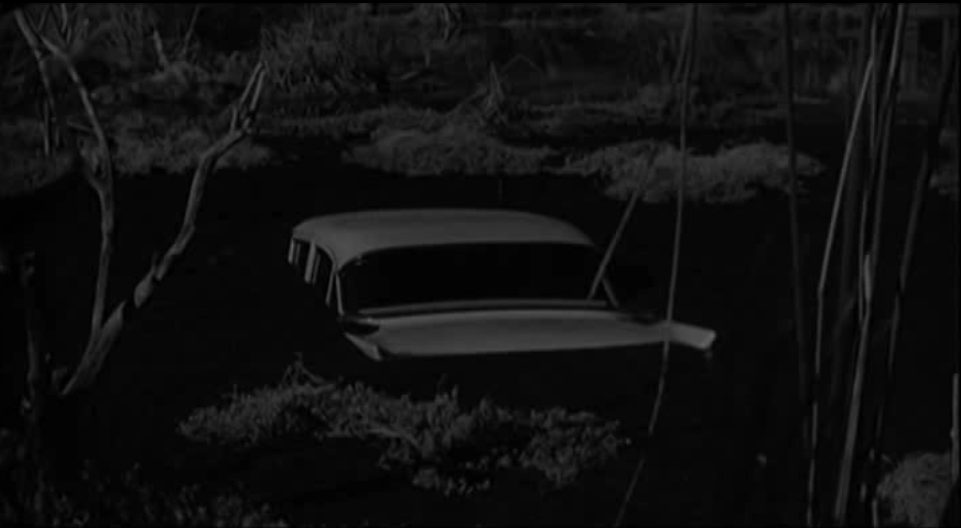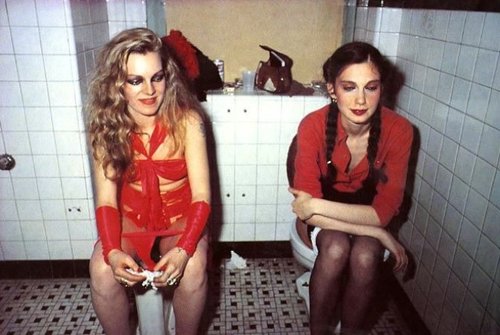MADDER LAKE ED. #3 : Thicker-than-Blood-and-Technique: Nan Goldin
EDITIONS
“Well I’m just people watching the other people watching me / We’re all people watching the other people watching we”
Sometimes in the gallery I find myself imagining what life lives behind the illusion of the art object before me. Does the artist have 2.3 children and a mortgage, or is it a life of the Fear and Loathing kind? Moreover, ought the artist's life behind the art object be a normal or extraordinary one? With Nan Goldin's photography the illusion of art (and life) is excoriated to reveal unadulterated humanity and sexuality that helplessly and hopelessly and lovingly retains the scab of experience as a single image. This is big.
If you think about it contemporary big-budget TV dramas like Fargo and House of Cards brilliantly and believably portray the filth and floss of human nature with visceral and visual aplomb. But moving images breathe familiarity through continuity whereas the photograph is the sniper's held breath before the pull of the trigger.
Goldin shoots herself, among friends, lovers, men, women, kids, couples, sexuality, mirrors, dressing up, fessing up, dressing down, drive ins, drag queens, front bums, back bums, willies, cocks, caesareans, baby bumps, granny with a gun, black guy licking his gun, white guy jacking up, bride snorting coke, hugging, kissing, fucking, pissing, peeing, posturing, sashaying, smoking, crying, smiling, before sex, during sex, after sex, love, lost...beaten up.
Nan Goldin, 'Nan one month after being battered' (1984) New York
Unlike the torture of getting snug with Granny and the family album on the jungle-florid couch, Goldin's photos unclench gritted teeth and forced smiles. They are less provincial, looking inward and outward at the same time. I smiled. I laughed; relief or release. I felt a palpable sense of loss when AIDS becomes an insatiable demon under Goldin's warm but obsessive scrutiny of her world during the 1980s.
Goldin's ability to capture human experience and human relationships (bad and good) in a single image is diabolical not saintly, but blessed she is all the same, as we are as witnesses. And when you transform one of Goldin's diaristic mugshots into a quick-fire procession of 700+ images and add an era-emotive soundtrack you get her seminal and sexy and sensual and sad The Ballad of Sexual Dependency currently showing at IMMA. But before we figure out the emotional fallout from the orchestration and compression of photographed experience on such an emotively rich but subculturally intimate scale—New York's Lower East Side bohemia at the turn of the 1980s and onwards—I want to share why Goldin's photographs continue to be important to me as an exemplar of art's redemptive power.
From the art books I've read, the art documentaries I've watched and the art I’ve experienced, New York's art scene of the late 1970s and early '80s seemed to be one big experiment without a speculative future; meaning, experimental visual art went hand in hand with experimental sex, music with drugs, photography with friends, life with art, and all without a thought of tomorrow. I like to imagine and believe that this small art scene that Nan Goldin and Irish artist Vivienne Dick (her solo compadre at IMMA) hung out in for a short-lived moment was one big melting pot where divisions between class and gender, sexuality and identity were ground down into a rock of Kryptonite that had the raw energy to defeat Superman[1].
I realise I’m romanticising here: I only have the art to go by. Goldin and Dick may tell you an alternative story beset by financial and emotional hardships as artists who comprised this ball of creative but cruel Kryptonite. Because the lived reality by all accounts was that New York was dripping with Fear and Loathing. But out of New York's societal dereliction the art that was made then and there had a nihilistic nerve and pulse that proclaimed with a middle finger and a blowed kiss: 'Fuck it, who cares? We care? That's all that matters!'
Like every generation of artists before and after there is always a need to expel something when the resources are scarce and the environment is harsh. Artists coming together is a pragmatic solution; and if big artist egos and temperaments are conducive to atomising creativity and authorship, the resulting art can be a game-changer (the early years of Basic Space Dublin was an example of crisis being good for good art).
In the exhibition literature for Goldin's and Dick's double matinée at IMMA their relationship emerges and bonds at the turn of the 1980s in the nihilistic heart of New York’s No-Wave art scene. Unlike Pop Art, No-Wave was less critically reflective of commercial America and more of a counter-culture in defiance of it with its punk connotations. And although Andy Warhol was an inspiration for these artists, especially in his depiction of women on film, what was put in place of Warhol’s comatose copying was frenetic imagery and noise: pure fucking energy.
But let's not get too romantic here. A lot of No-Wave film is pretty awful. Most of the time it's a case of artists coming together with fuck all to offer except energy and that always undervalued thing called naiveté. But amidst all this energy, naiveté and counter-culture bitchiness and bastardizing are moments in the Super 8 films of Jim Jarmusch and Vivenne Dick that electrify the soul. You could call this aesthetic tingle relative sobriety against all the drunken technique and improvisation but I was spellbound at times watching Lydia Lunch (a No-Wave and Cinema of Transgression regular) spilling her guts with self-harming razor sharpness in Dick’s Beauty becomes the Beast (1979) at IMMA. And it's big characters like the beautifully visceral writers Cookie Mueller and Rene Ricard brimming with energy and we-are-all-in-this-together fellowship, where friendship is thicker than blood and technique and more romantically violent, that Dick, and especially Goldin, capture on camera.
Goldin's early life story is a tortured but all too familiar affair which saw friendship become a surrogate for family. From straight and white America’s perspective Goldin’s new family of friends would have been typecast as marginal deviants; but you can imagine looking from the outside, in that this was the womb of the world to them and one you could happily get lost in. And Golden did, in love and war and drugs. In a sense Goldin’s world was a private affair to the point that the artists propagandised privacy. The notions of private and public wasn't the same as the one we live today as image traffickers of identity. I suppose there was the feeling of, 'Who'd be interested in this stuff anyway? Only us I guess, so let's make this stuff for us.'
What you get through Goldin's eyes is intimacy not a fling with a cultural theory. There's life in these images; beating hearts. There's personal need in these images too; the audience is secondary. Like Diane Arbus before her making friends with the sex-for-favours winos and prostitutes and 'freaks' of New York's Washington Square Park in the 1960s, Goldin's camera was also an icebreaker. So technique is superfluous to Goldin's attachment need to connect intimately from very early on, unconsciously or not.
Innocence and maturity play out in the Ballad too, and underscore how being young and full of cum sometimes trumps the notion that the artist becomes a better artist with age. Maybe the artist becomes more self aware and self critical and self conscious with maturity, but there is something lost in growing up, there is less dependency, sexual or otherwise. When you read the analyses of prodigious teenage photographer Francesca Woodman and her mature photographic vision you might say she was either a visual savant or mature beyond her years or some trauma had catapulted her into a future self-reflexive self. But perhaps it has nothing to do with those things; perhaps innocence and naiveté play a bigger part in creativity than we would like to think.
But it’s Goldin’s portrayal of men that personally struck me most watching the Ballad at IMMA. There something so vital and immature and innocent about her men, straight and gay. They are closer to kids, to babies, to honesty, as they arch their backs and cling to their willies like young boys in silly and playful defiance. Goldin once recounted on camera something I can't match in its nihilistic finality:
“...the four-year-old said to the baby “Do you remember God? Because I'm beginning to forget.” So I felt that babies come from somewhere else / they're closer to whatever IT IS / where we come from and where we go / they're a lot closer in those years, and no more. And then they're taught to forget.”[2]
Nan Goldin’s Weekend Plans through 15 October, 2017.
----------------
Notes
1. Superman appeared on American TV screens for the first time in 1978.
2. From Tate Shots: Nan Goldin, 2014.






























![MADDER LAKE ED. #10: TOWARDS A HABIT [ psychoanalytically speaking ]](https://images.squarespace-cdn.com/content/v1/594626eae3df28301b1981dc/1513427037670-14LCX8VBQFY0V1FCMR03/gober-circa-1985.jpg)






